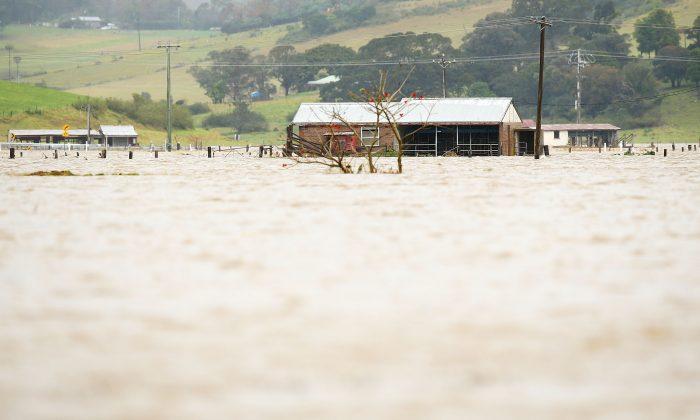Australian wheat farmers expect the bill from flooding rain that has wiped out wheat crops in the northwest of New South Wales (NSW) to reach hundreds of millions of dollars.
Agronomists have estimated “conservative” losses of 120,000 hectares of wheat with an estimated value up to $192 million as a result of widespread flooding in the Moree, Walgett and Narrabri areas.
It has prompted fresh calls for urgent financial support for farmers impacted by flooding who want emergency funding allocated in Tuesday’s budget.
NSW Farmers Grains Committee Chair Justin Everitt said some farmers were calling it a “wet drought”, and while it is unlikely to impact food prices in the short-term, he said for some growers it will be a financial disaster.
“You spend all this money preparing your paddocks - sowing your crops, fertilising and spraying them - only to see them wiped out a couple weeks before harvest. It’s heartbreaking,” Everitt said.
“It’s a big turnaround in fortune from the big bumper harvest ABARES (Australian Bureau of Agricultural and Resource Economics) was predicting a couple of months ago.”
“We’ve had a huge crop across the state in those places where people could get on paddocks to sow, but now that’s all under threat too.”
Grain farmer Matthew Madden received 243 millimetres of rain between Wednesday and Friday last week at his farm 25 kilometres west of Moree, and remains cut off from the town.
Madden, also a director of Grain Producers Australia, is expecting downgrades on his wheat while others will face “catastrophic losses.”
He said normally, the rainfall wouldn’t have done the damage it had done, but it had fallen in already-full catchments.
“Very preliminary assessments done found at least 120,000 hectares of the crop could be lost; my personal belief is that that could that could be conservative,” Madden told AAP.
He said there would also be other associated costs, for example, for contractors who won’t be able to harvest, as well as the damage done to infrastructure.
Madden said only three years ago he had witnessed the driest year on his property, and now it is the reverse.
“2019 was the worst we'd ever seen, and now it’s the highest water level, all in three years,” he said.
NSW Farmers Business, Economics and Trade Committee chair John Lowe called on the federal government to bolster relief payments in the budget.
“There are many impacted farmers who will be cash poor and without an income as a result of this flooding,” Lowe said.
“So many of our towns and businesses depend on agriculture, so it is critical farmers have the certainty to try again next season.
“Swift financial assistance – or the lack thereof – could make or break many farming communities.”





